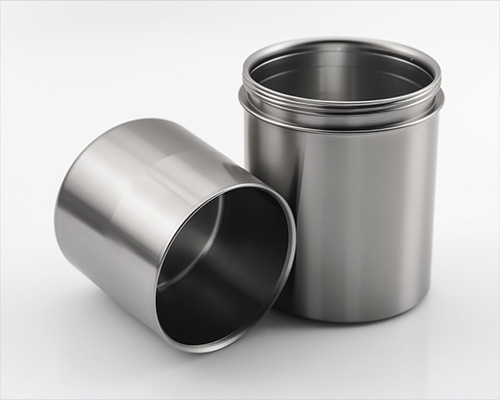The Corrosion Resistance Of Tantalum Metal Against Metal Melts
What is Tantalum?
Tantalum is employed when high corrosion resistance is required. Although tantalum is not classified as a noble metal, its chemical resistance is comparable to that of noble metals. When exposed to air, tantalum forms a very dense oxide film (Ta2O5) which protects the base material from corrosive attack.

Tantalum Metal: Corrosion Resistance against Metal Melts
Tantalum is resistant to a range of metal melts including Ag, Bi, Cd, Cs, Cu, Ga, Hg, K, Li, Mg, Na and Pb, provided that these melts have a low oxygen content. The material is, however, affected by Al, Fe, Be, Ni and Co.
|
Tantalum Metal: Corrosion Resistance with Respect to Metal Melts |
|||
|
Aluminium (AL) |
not resistant |
Lithium (Li) |
resistant at < 1 000 °C |
|
Beryllium (Be) |
not resistant |
Magnesium (Mg) |
resistant at < 1 150 °C |
|
Lead (Pb) |
resistant at < 1 000 °C |
Sodium (Na) |
resistant at < 1 000 °C |
|
Cadmium (Ca) |
resistant at < 500 °C |
Nickel (Ni) |
not resistant |
|
|
resistant at < 980 °C |
Mercury (Hg) |
resistant at < 600 °C |
|
Iron (Fe) |
not resistant |
Silver (Ag) |
resistant at < 1 200 °C |
|
Gallium (Ga) |
resistant at < 450 °C |
Bismuth (Bi) |
resistant at < 900 °C |
|
Potassium (K) |
resistant at < 1 000 °C |
Zinc (Zn) |
resistant at < 500 °C |
|
Copper (Cu) |
resistant at < 1 300 °C |
Tin (Sn) |
resistant at < 260 °C |
|
Cobalt (Co) |
not resistant |
||
Chemical reactions occur rapidly when base materials such as tantalum are brought into contact with noble materials such as platinum. Consequently, you should consider the behaviour of tantalum when it comes into contact with other materials within the system, particularly if you work at high temperatures.
Conclusion
Thank you for reading this article. We trust that it has assisted you in understanding the properties of tantalum. If you require further details regarding tantalum and other refractory metals, please visit Stanford Advanced Materials (SAM).
Stanford Advanced Materials (SAM) is a global supplier of tantalum products and has more than 20 years’ experience in the manufacture and sale of tantalum metal products. The company supplies tantalum metals that meet the research and production specifications of its clientele. SAM may be regarded as a supplier and business partner for your requirements.

 Bars
Bars
 Beads & Spheres
Beads & Spheres
 Bolts & Nuts
Bolts & Nuts
 Crucibles
Crucibles
 Discs
Discs
 Fibers & Fabrics
Fibers & Fabrics
 Films
Films
 Flake
Flake
 Foams
Foams
 Foil
Foil
 Granules
Granules
 Honeycombs
Honeycombs
 Ink
Ink
 Laminate
Laminate
 Lumps
Lumps
 Meshes
Meshes
 Metallised Film
Metallised Film
 Plate
Plate
 Powders
Powders
 Rod
Rod
 Sheets
Sheets
 Single Crystals
Single Crystals
 Sputtering Target
Sputtering Target
 Tubes
Tubes
 Washer
Washer
 Wires
Wires
 Converters & Calculators
Converters & Calculators
 Write for Us
Write for Us
 Chin Trento
Chin Trento


